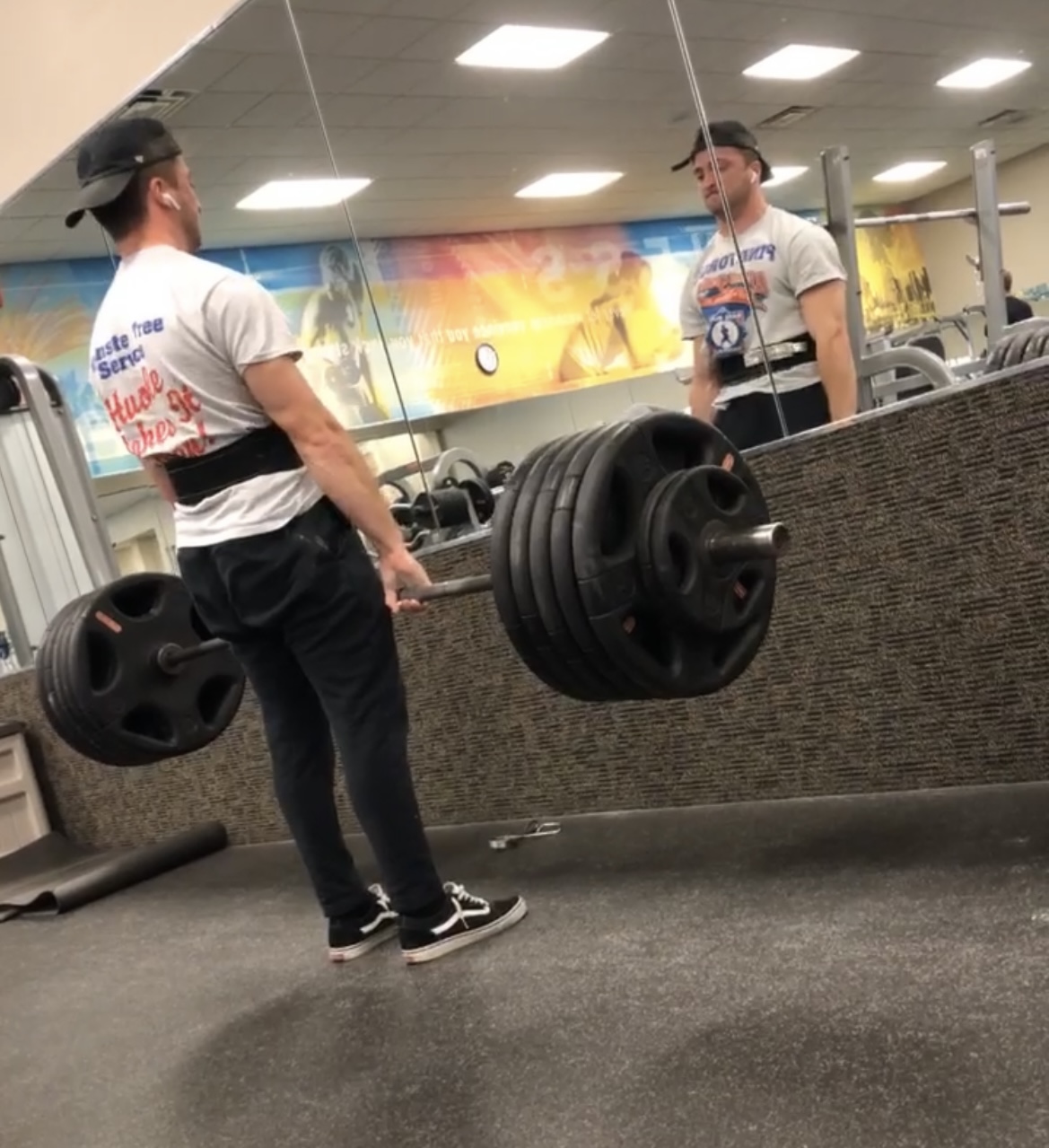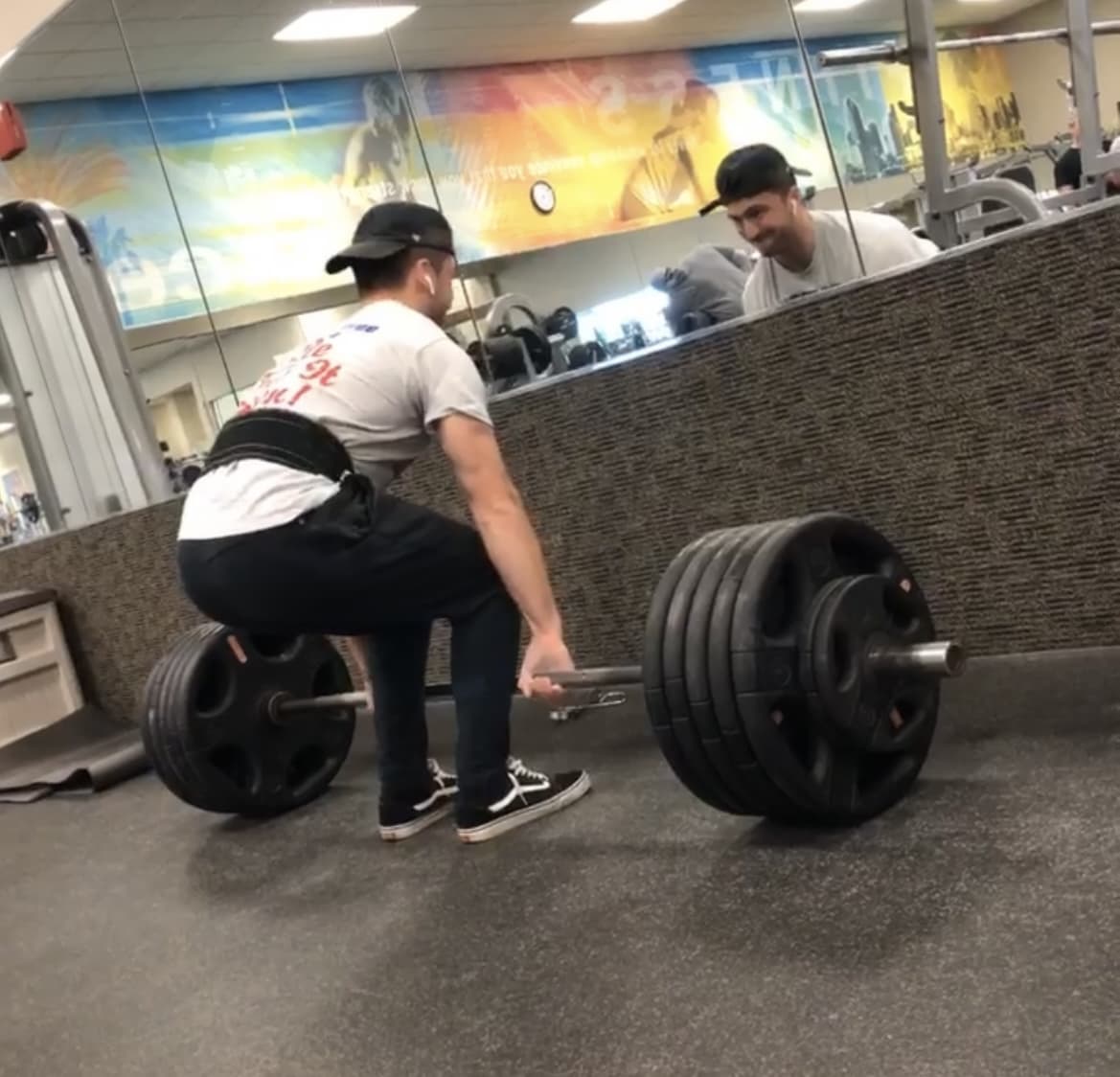Romanian Deadlifts vs. Conventional Deadlifts
Written by The Boostcamp Editors
Romanian Deadlift vs Conventional Deadlift: Which is Better?
Romanian vs. Conventional Deadlifts Overview
The deadlift is the king of exercises when it comes to building strength and muscle mass throughout the entire body, hence the reason you see it incorporated into so many different workout programs. It is one of the big 3 compound power lifts (the other two being the squat and bench press), and the deadlift recruits the legs, the back, the arms, traps, and so on, but there are multiple different variations of the deadlift, each with its own pros and cons. While the most popular version of the deadlift is the conventional style, the Romanian deadlift, also known as the RDL, is another very popular version, known as the traditional deadlift, to throw into your training plan.
There are plenty of arguments stating that each one should be placed on a different day in your workout split, as the Romanian deadlift is more of a leg focused exercise, but what are the main differences between a Romanian deadlift and a conventional deadlift? Which one is better? When should you be doing each one?
Let's dive into the Romanian deadlift vs. the conventional deadlift.
Biggest Differences Between Romanian Deadlifts vs. Conventional Deadlifts
The first thing to discuss are the main differences between Romanian deadlifts and conventional deadlifts.
Position: The Romanian deadlift starts from a standing position with the bar in your hands while the conventional deadlift starts from a bent over position with the bar on the floor.
Form: The Romanian deadlift is completed by bending at the hips, with your legs fairly straight the entire movement. On the flip side, the conventional deadlift is completed with more bend at the knees and hips, rather than standing straight up.
Muscles worked: The Romanian deadlift uses more of the glutes and hamstring muscles, makes it a great exercise for leg day. The conventional deadlift uses those muscles plus more of the quads and mid-back, which makes it a good exercise for leg day or even back day.
Working weight: The Romanian deadlift is often used as a developmental exercise to improve the conventional deadlift. You'll use lower weights on the Romanian deadlift than a regular deadlift, as it is more isolating and places the stress on specific areas of the body.
Cues: The Romanian deadlift is often cued with a pull through the hips. The conventional deadlift is often cued with a push from the floor, through your legs.
How to Perform Romanian Deadlifts
Stand with your feet hip-width apart and hold a barbell in front of your thighs with an overhand grip.

Keeping your back straight and your core engaged, hinge at the hips and push your butt back until your torso is at about a 45-degree angle to the floor.

From here, lower the barbell down your shins, keeping it close to your body the entire time. Once the barbell reaches just below your knees, pause for a moment then drive through your heels to return to standing.
Image courtesy of PowerliftingTechnique.com
How to Perform a Conventional Deadlift
Start by standing with your feet hip-width apart and the bar on the ground in front of you.
Bend at your hips and knees and grab the bar with an overhand grip, your hands shoulder-width apart.
Keeping your back straight, lift your chest, and brace your core, then drive through your heels to stand up tall. The bar should stay close to your body as you move.
Reverse the motion to return to the starting position.
Best Tips for Romanian and Conventional Deadlifts

Pictured: Jake DiCesare pulling a conventional deadlift
1. Start light: As with any new exercise, it's important to start light and work your way up. This will help you learn the proper form before adding more weight.
2. Keep the bar close to your body: Instead of letting the bar drift out in front of you, keep it close to your shins throughout the entire movement. One cue you can use is to "paint your shins" with the bar.
3. Use a full range of motion: For Romanian deadlifts, don't be afraid to lower the bar all the way down below your knees to achieve a greater range of motion at the hip joint. In fact, this will help you get a better stretch in your hamstrings. When it comes to conventional deadlifts, you should be returning the weight to the floor regardless. If you're unsure about proper form or want to maximize your deadlift technique, consider working with a personal trainer.
4. Keep your core engaged: Since both of these exercises work your posterior chain, it's easy to let your lower back round, but doing so puts you at risk for injury. So, make sure to keep your core engaged throughout the entire movement. Perhaps use a weightlifting belt!
5. Drive through your heels: For Romanian deadlifts, when you reach the top of the movement, drive through your heels to standing. This will ensure that you're using your glutes and hamstrings, rather than your quads, to complete the movement. Another cue is to pull-through with your hips
Mistakes to Avoid With Romanian and Conventional Deadlifts
1. Starting too heavy: As stated above, with any new exercise, it's important to start light and work your way up. Form is far more important than weight, so it is completely fine to go light and get a feel for the exercise before anything else.
2. Letting the bar drift out in front of you: You may be tempted to let the bar drift out in front of you, but you are going to want to keep it close to your shins throughout the entire movement. Think of "painting your shins".
3. Not using a full range of motion: Don't be afraid to lower the bar all the way down below your knees during a Romanian deadlift, this allows for a better stretch in the hamstrings. For a conventional deadlift the weight should be returning to the floor regardless.
4. Letting your lower back round: These exercises work your posterior chain which makes it easy to let your lower back round. When your back rounds during a deadlift, this puts you at risk for injury. Keep your core engaged and tight throughout the entire lift.
5. Not driving through your heels: When you reach the top of the movement for Romanian deadlifts, drive through your heels to standing. This will ensure that you're using your glutes and hamstrings, rather than your quads, to complete the movement. Another cue is to pull-through with your hips.
Difference Between Romanian and Stiff Leg Deadlift
The Romanian deadlift is a variation of the conventional deadlift that emphasizes the hamstrings and glutes. In contrast, the stiff leg deadlift is an exercise that specifically targets the hamstrings, making it great for bodybuilding and powerlifting alike. The key differences between the two exercises are that the stiff leg deadlift starts from the floor, similar to a conventional deadlift except your knees are straight. This takes the quads out of the equation. A systematic review of electromyographic activity in deadlift exercise and its variants has shown the benefits and differences between the Romanian deadlift and the stiff leg deadlift.
Some powerlifters argue that a Romanian deadlift is better for muscular development, while a stiff leg deadlift has more (slightly) more transferability to the conventional deadlift, due to it being closer to that movement.
Deadlift FAQs
Can you do dumbbell Romanian deadlifts?
Yes, you can do Romanian deadlifts with dumbbells. The same principles apply as when using a barbell. Start light and keep the weights close to your body as you lower them down your shins.
Boostcamp
If you are looking to stay on track and continue with linear progression, then finding a good workout program that incorporates deadlifts is the key. Where do you look for a good workout program? Check out the Boostcamp App for some great programs, as there are over 50 free options to choose from, but you can Also, be sure to follow Boostcamp on Instagram and subscribe on YouTube!
Romanian Deadlifts vs. Conventional Deadlifts Wrap Up
The Romanian deadlift is a great exercise for developing the muscles in your posterior chain, including your glutes and hamstrings, while the conventional deadlift is a great movement for the body as a whole. It's important to start light and use proper form to avoid injury. And, be sure to keep the bar close to your body and drive through your heels to assume the correct position and complete the movement with muscle activation.


